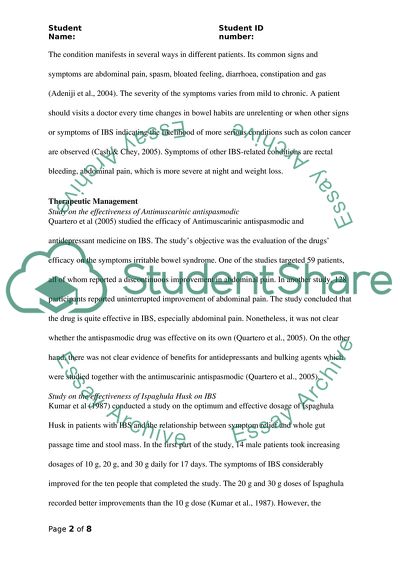Cite this document
(Therapeutic Management of Irritable Bowel Syndrome in Primary Care Literature review Example | Topics and Well Written Essays - 1500 words, n.d.)
Therapeutic Management of Irritable Bowel Syndrome in Primary Care Literature review Example | Topics and Well Written Essays - 1500 words. https://studentshare.org/health-sciences-medicine/1853252-therapeutic-management-of-irritabe-bowel-syndrome-in-primary-care
Therapeutic Management of Irritable Bowel Syndrome in Primary Care Literature review Example | Topics and Well Written Essays - 1500 words. https://studentshare.org/health-sciences-medicine/1853252-therapeutic-management-of-irritabe-bowel-syndrome-in-primary-care
(Therapeutic Management of Irritable Bowel Syndrome in Primary Care Literature Review Example | Topics and Well Written Essays - 1500 Words)
Therapeutic Management of Irritable Bowel Syndrome in Primary Care Literature Review Example | Topics and Well Written Essays - 1500 Words. https://studentshare.org/health-sciences-medicine/1853252-therapeutic-management-of-irritabe-bowel-syndrome-in-primary-care.
Therapeutic Management of Irritable Bowel Syndrome in Primary Care Literature Review Example | Topics and Well Written Essays - 1500 Words. https://studentshare.org/health-sciences-medicine/1853252-therapeutic-management-of-irritabe-bowel-syndrome-in-primary-care.
“Therapeutic Management of Irritable Bowel Syndrome in Primary Care Literature Review Example | Topics and Well Written Essays - 1500 Words”. https://studentshare.org/health-sciences-medicine/1853252-therapeutic-management-of-irritabe-bowel-syndrome-in-primary-care.


